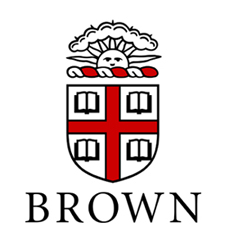Scope & content
The Nathan Fellows Dixon Family Papers document the personal and political history of a prominent 19th-century Rhode Island family. The collection includes nearly 3000 letters, photographs, legal documents, genealogies, books and personal mementos dating from 1721 to 1938. The bulk pertains to Nathan F. Dixon, Sr. (1774-1842), his son (1812-1881) and grandson (1847-1897)—also named Nathan F. Dixon—all of whom attended Brown University before practicing law and holding state and national office.
The Dixon Family Papers are organized primarily by form into eight series. The first of these is Correspondence, and of particular interest are letters that Phebe "Annie" (Dixon) McClure (daughter of N. F. Dixon (1812-1881)) received during the 1880's and 1890's from her mother Harriet (Swan) Dixon and her sister Harriet Dixon. Altogether these letters trace the private, domestic world of the upper-class Victorian woman and present a moving counterpoint to the very public world of the Dixon men.
The second series, Writings, also features the voice of Harriet (Swan) Dixon in the form of a two-volume travel diary she kept during her 1839-40 visit to the British Isles before her marriage. Travel abroad was then considered a means of personal refinement, and the young Harriet Swan's journal observations suggest the genteel sensibility to which she-and others of her class--aspired. Her diary is significant to the study of nineteenth-century women's travel narratives.
The third series, Personal Memorabilia, includes Dixon diplomas, Bibles, various invitations and calling cards, and family-related newspaper clippings. There are three large scrapbooks, each devoted to a Nathan Fellows Dixon, which contain personal and political mementoes, newspaper clippings, letters and miscellaneous documents. The scrapbooks were compiled by Grace (McClure) Dixon, wife of the youngest Nathan F. Dixon (1847-1897).
Most of the fourth series--Political Memorabilia--consist of mementos from the youngest N.F. Dixon's career and include invitations and passes to the 1885 Washington Monument Dedication and the 1893 Worlds Columbian Exposition in Chicago.
The Legal/Military documents are divided into two subseries. The Dixon Family documents include court dockets, commissions and numerous land deeds dating back to 1788. The second subseries contains various writs, warrants, deeds and claims that were presumably heard, witnessed or undertaken by the Dixons on behalf of their clients. Most notably, this subseries also includes a collection of affidavits sworn by Revolutionary War veterans (or their surviving spouses) attesting to their service in order to qualify for federal pensions; the first Nathan Dixon served as chairman of the U.S. Senate Committee on Revolutionary Claims which considered these petitions.
Series six, Genealogical material, and Series seven, Rhode Island and local history, reflect the commitment of Grace (McClure) Dixon and her sister-in-law Phebe "Annie" (Dixon) McClure to researching their family and geographical histories. Much of the material is in the form of loose notes, but there are several comprehensive genealogies and family histories in the collection, as well as in the separately cataloged material. These describe branches such as the Palmer, Noyes and Scott Family on the Dixon side, and the Rice Family on the McClure side. A collection of newspaper clippings about the Westerly, Rhode Island, and Stonington, Connecticut, areas reveal the close relationship of this large family to the social and commercial development of the region. The Dixons played a prominent role in the establishment of the New York, Providence & Boston Railroad in the 1830's, as many of the documents in this series attest.
An extensive collection of framed and unframed photographs, daguerreotypes and cabinet cards comprises the last series. Most of these are portraits, but also included are several interior and exterior views of the Dixon Homestead and Brown University buildings from the mid- to late-nineteenth century.
Altogether, the papers offer a picture of 19th-century family life across several generations as New England moved from an agrarian to a predominantly industrial culture. The correspondence, personal memorabilia and photographs document the private lives of the Dixon, Palmer, Swan and related families; the political memorabilia and newspaper clippings place these lives within their changing political and social contexts.


